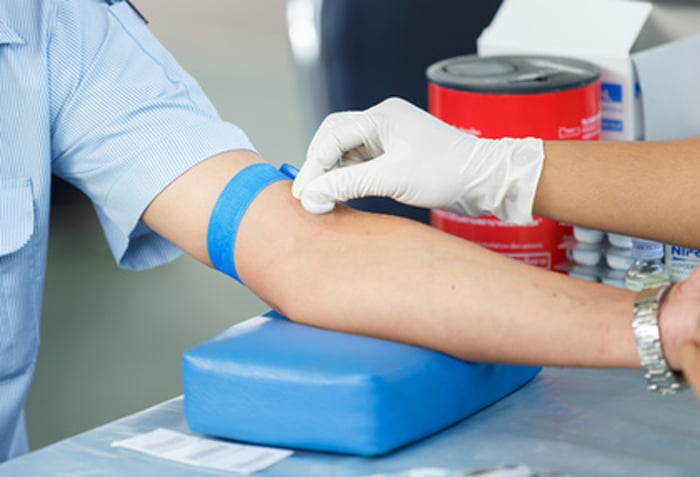Ultimate guide to choosing the Right Phlebotomy Table: Equipment Tips & Best Practices
Whether you are a healthcare facility director, a phlebotomy technician, or a medical student, selecting the appropriate phlebotomy table is a critical decision that impacts patient comfort, safety, and the efficiency of blood collection procedures. With a plethora of options available, making an informed choice requires understanding key features, materials, safety considerations, and best practices. this comprehensive guide aims to walk you through the essentials of choosing the right phlebotomy table, offering practical tips and equipment suggestions to enhance your practice.
Why a High-Quality Phlebotomy Table Matters
The right phlebotomy table does more then provide a surface for blood collection; it plays an integral role in ensuring safety,optimizing workflow,and improving patient experience. Here’s why investing in the right equipment is essential:
- Patient Comfort: A well-designed table minimizes discomfort and anxiety for patients during blood draws.
- Safety and Hygiene: High-quality materials are easier to disinfect, reducing infection risks.
- Efficiency: adjustable features and stability streamline procedures for healthcare workers.
- Durability and Longevity: Professional-grade tables withstand frequent use and cleaning without deteriorating.
Key Features to Consider when Choosing a Phlebotomy Table
Before purchasing a phlebotomy table, evaluate these critical features to ensure it meets your clinical needs:
1. Adjustability and Ergonomics
Look for tables with adjustable height and tilt capabilities to accommodate different patient sizes and positions. Ergonomics reduce strain for staff and improve patient comfort.
2. Material and Surface Quality
Opt for tables with durable, easy-to-clean surfaces such as antimicrobial laminate, stainless steel, or high-grade PVC. These materials support thorough disinfection and resist stains.
3. Stability and Weight Capacity
The table shoudl offer a high degree of stability and support patients of various weights,with a minimum weight capacity of 250 lbs (113 kg).
4. Size and Dimensions
Choose a size that fits your space without compromising functionality. Standard widths range from 24″-30″ (60-76 cm); length should comfortably support patient legs and arms.
5. Safety Features
- Non-slip footpads or wheels with brakes
- Rounded edges to prevent injuries
- Lockable height adjustments
6. Portability and Storage
Depending on your setting, a lightweight, portable table with wheels may be beneficial. Some tables offer integrated storage for supplies.
Equipment Tips for Optimal Use of Phlebotomy Tables
Using your phlebotomy table correctly maximizes safety and efficiency:
- Pre-clean and disinfect the surface before and after each patient to prevent cross-contamination.
- adjust height appropriately to reduce staff fatigue and improve ergonomics.
- Position patient comfortably with supported limbs to facilitate blood draw.
- Organise supplies within reach but away from the sterile area.
Practical Tips for Selecting the Right Phlebotomy Table
- Assess your space: Measure your clinic or lab area to ensure the table fits comfortably.
- Consider patient demographics: For pediatric or bariatric patients,choose tables that support a range of sizes and weights.
- Evaluate cleaning requirements: prefer tables with antimicrobial or non-porous surfaces for easy sanitation.
- Compare warranties and service: Reliable customer support and warranties protect your investment.
- Read reviews and testimonials: User feedback can reveal practical insights into table performance.
Benefits of Using the Right Phlebotomy Table
Investing in an optimal phlebotomy table delivers numerous benefits:
- Enhanced patient experience: Comfortable, ergonomically designed tables reduce stress and improve cooperation.
- streamlined workflow: Adjustable and well-organized tables make blood collection quicker and more efficient.
- Improved safety standards: Proper disinfectant compatibility and sturdy construction ensure safety for patients and staff.
- Cost-effectiveness: Durable tables minimize replacement costs over time.
Case Studies & First-Hand Experiences
Consider this example:
Case Study: Improving Blood Draw Success Rates with Ergonomic Tables
A community health clinic upgraded to ergonomic, height-adjustable phlebotomy tables. Post-implementation, patient complaints about discomfort decreased by 30%, and staff reported reduced fatigue. the clinic also noted an enhancement in blood draw success rates due to better patient positioning.
Real-world insights emphasize the importance of selecting the right equipment tailored to specific clinical environments.
final Thoughts & Conclusion
Choosing the right phlebotomy table is a vital investment in your healthcare practice. prioritize adjustable features,durability,safety,and ease of maintenance to ensure optimal performance. Remember, a well-chosen table not onyl improves patient comfort but also enhances operational efficiency, staff well-being, and infection control. Take the time to evaluate your needs, compare options, and select equipment that will serve your practice reliably for years to come.
For more expert advice or to explore different models, consult with reputable medical equipment suppliers or visit dedicated online platforms specializing in phlebotomy supplies. Your patients and staff will thank you for making the right choice!
